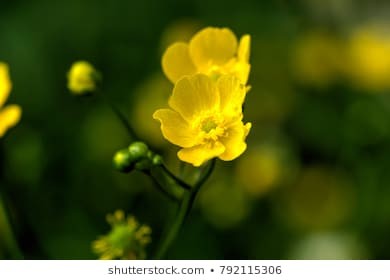Western buttercup
(Ranunculus neapolitanus)

Description
Ranunculus occidentalis, the western buttercup, is a species of buttercup found in the western regions of North America. Its distribution extends from Alaska through British Columbia and Alberta to central California. The flower can be seen in open meadows, forests, and other generally flat areas up to an elevation of 2,200 metres (7,200 ft). Aleut first nations may have used juice from the plant as a poison, its toxicity arising from the substance protoanemonin. Shasta first nations coincided blooming Ranunculus occidentalis with salmon runs in the summer. The seeds were used to make pinole, a staple food. This plant is similar to, and sometimes difficult to distinguish from, the California buttercup (Ranunculus californicus). Ranunculus is a large genus of about 600 species of flowering plants in the family Ranunculaceae. Members of the genus are known as buttercups, spearworts and water crowfoots. The familiar and widespread buttercup of gardens throughout Northern Europe (and introduced elsewhere) is the creeping buttercup Ranunculus repens, which has extremely tough and tenacious roots. Two other species are also widespread, the bulbous buttercup Ranunculus bulbosus and the much taller meadow buttercup Ranunculus acris. In ornamental gardens, all three are often regarded as weeds. Buttercups usually flower in the spring, but flowers may be found throughout the summer, especially where the plants are growing as opportunistic colonizers, as in the case of garden weeds. The water crowfoots (Ranunculus subgenus Batrachium), which grow in still or running water, are sometimes treated in a separate genus Batrachium (from Greek βάτραχος bátrakhos, "frog"). They have two different leaf types, thread-like leaves underwater and broader floating leaves. In some species, such as R. aquatilis, a third, intermediate leaf type occurs. Ranunculus species are used as food by the larvae of some Lepidoptera species including the Hebrew character and small angle shades. Some species are popular ornamental flowers in horticulture, with many cultivars selected for large and brightly coloured flowers. Buttercups are mostly perennial, but occasionally annual or biennial, herbaceous, aquatic or terrestrial plants, often with leaves in a rosette at the base of the stem. In many perennial species runners are sent out that will develop new plants with roots and rosettes at the distanced nodes.
Taxonomic tree:







